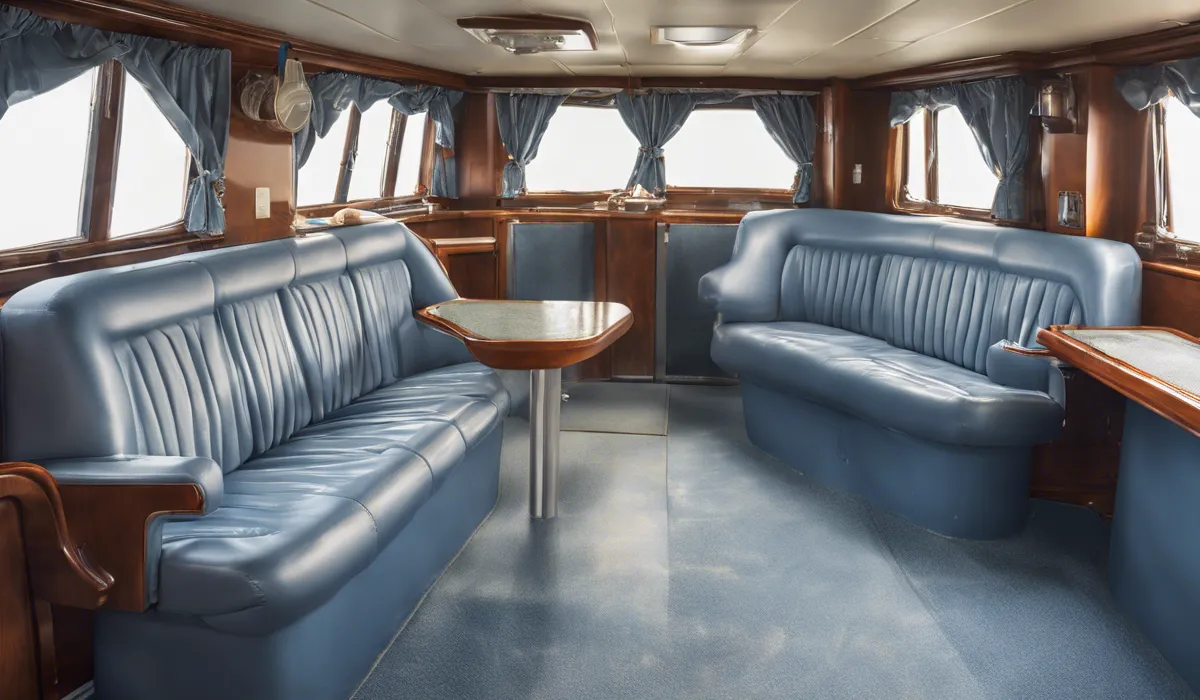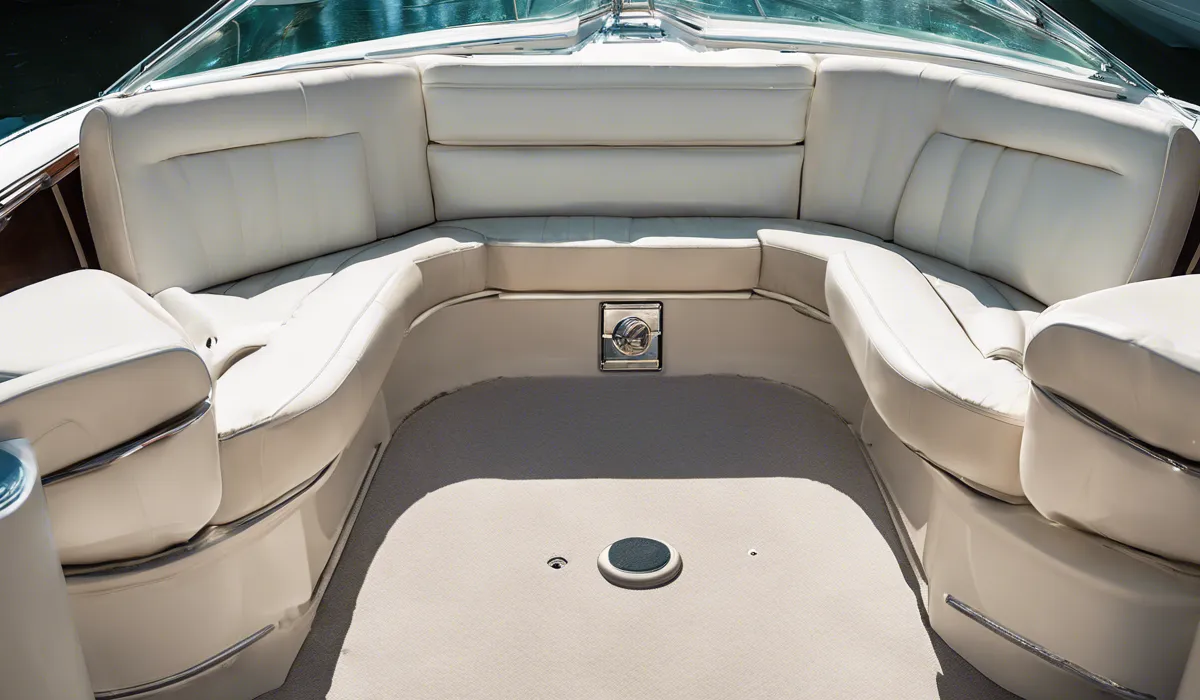To remove mildew from boat seats, create a mixture of 1 part white vinegar to 4 parts water. Apply it to the affected areas, scrub with a soft brush, then rinse with water. For stubborn stains, use a marine-grade mildew remover following the manufacturer’s instructions.
Understanding Mildew: Causes and Prevention

Defining Mildew and Its Difference from Mold
Mildew is a type of fungus that thrives in moist environments. It often appears as a patch of white or gray fungus lying on the surface of a moist area.
Unlike mold, which can be black or green and penetrate beneath the surface, mildew usually remains on the surface, making it easier to clean. Both are fungi, but mildew is less invasive and often easier to manage.
Common Causes of Mildew on Boat Seats
Mildew on boat seats is mostly due to dampness and lack of air circulation. When boat seats stay wet and are not dried properly, mildew can start to grow.
Seats covered with vinyl or other materials can trap moisture, providing the perfect home for mildew to flourish.
Tips for Preventing Mildew Growth
Ensuring Proper Ventilation
To prevent mildew, ensure your boat is well-ventilated. Allow air to circulate freely to reduce moisture. Open compartments and use fans or dehumidifiers to keep the air moving.
Adopting Regular Cleaning Practices
Clean your boat seats regularly with mild soap and water. This practice prevents the buildup of organic materials that mildew feeds on. After cleaning, always dry the seats completely.
Implementing Moisture Control
Use moisture absorbers and ensure any spills or rainwater are wiped off quickly. Keeping boat seats dry is your best defense against mildew.
DIY Mildew Removal Techniques

Safety Measures for Cleaning
Before you begin, wear gloves and a mask to protect yourself from the spores. Ensure your cleaning area is well-ventilated to avoid inhaling any mildew spores.
Homemade Cleaning Solutions
Vinegar and Water Mixture
One effective homemade solution is a mixture of 1 part white vinegar to 4 parts water. Vinegar is a natural mildew killer and is safe for most surfaces.
Baking Soda Paste
Mix baking soda with water to create a thick paste. This paste can be applied to mildew stains and left to sit before scrubbing, which helps lift the mildew away.
Dish Soap and Water Solution
A simple mixture of dish soap and water can be effective for cleaning mildew. The soap helps to break down the growth and makes it easier to remove.
Step-by-Step Mildew Removal Guide
Pre-Cleaning the Affected Area
Start by brushing off any loose mildew spores with a dry brush. This will make the cleaning solutions more effective.
Applying the Cleaning Solution
Spray or apply your chosen cleaning solution generously to the mildewed areas. If using vinegar or baking soda paste, let it sit for a few minutes to penetrate the mildew.
Scrubbing with a Soft Brush or Cloth
Use a soft brush or cloth to gently scrub the mildew. Avoid using abrasive tools that can damage the seat’s material.
Rinsing Thoroughly
After scrubbing, rinse the seats well with clean water to remove any residue from the cleaning solutions.
Drying the Seats Completely
Dry the seats with a towel or let them air-dry in the sun. Ensure they are completely dry to prevent mildew from returning.
Maintenance and Protection After Mildew Removal

Establishing a Regular Cleaning Schedule
Keep mildew at bay by cleaning your boat seats on a regular basis. A consistent cleaning routine will prevent mildew spores from taking hold.
Using Protective Covers
When not using your boat, cover the seats with a protective cover. This will shield them from moisture and reduce the likelihood of mildew growth.
Commercial Mildew Preventatives and Protectants
Consider using commercial products designed to prevent and protect against mildew. Follow the manufacturer’s instructions for the best results.
Monitoring for Early Signs of Mildew
Regularly inspect your boat seats for early signs of mildew. Catching it early makes it much easier to remove.
Seasonal Care to Minimize Mildew
Before storing your boat for the season, clean and dry the seats thoroughly. Use a moisture absorber to keep the air dry and mildew-free during storage.
FAQs About Removing Mildew from Boat Seats
What is the vinegar to water ratio for a homemade mildew cleaner for boat seats?
The recommended vinegar to water ratio for a homemade mildew cleaner is 1 part white vinegar to 4 parts water.
How do I apply the vinegar solution to remove mildew from boat seats?
Apply the vinegar solution to the affected areas, scrub with a soft brush, and then rinse with water.
What should I do if the vinegar solution doesn’t remove the mildew?
If the vinegar solution is not effective, use a marine-grade mildew remover and follow the manufacturer’s instructions.
Can I use any brush to scrub the mildew off boat seats?
No, you should use a soft brush to avoid damaging the boat seats while scrubbing.
Is it necessary to rinse off the cleaning solution after scrubbing the boat seats?
Yes, after scrubbing, it is essential to rinse the boat seats with water to remove any residue of the cleaning solution.
Final Thoughts
To effectively tackle mildew on boat seats, start with a simple DIY solution of white vinegar and water in a 1:4 ratio.
Apply this mixture, scrub gently, and rinse. When facing more persistent mildew stains, opt for a specialized marine-grade mildew remover, ensuring to adhere to the product’s specific guidelines for use.
